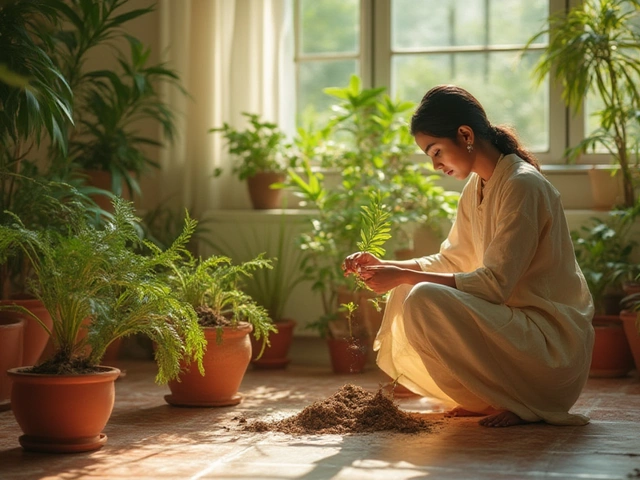Tool Durability: Keep Your Garden Tools Working Longer
Good tools are the backbone of any garden. When a spade breaks or a pruner snaps, work stops and frustration builds. The best way to avoid that is to understand why tools wear out and what you can do to stretch their life. Below you’ll find practical tips that fit Indian climates, budgets, and the kind of soil most of us deal with.
Why durability matters
A sturdy shovel or a rust‑free hoe saves you time, money, and energy. Cheap tools often bend, rust, or lose their grip after a few seasons, forcing you to buy replacements more often. In regions with heavy monsoon rains, tools are exposed to moisture that speeds up corrosion. Likewise, the abrasive nature of laterite soil can dull blades quickly. When your tools stay sharp and strong, you can work faster and enjoy a healthier garden.
Simple steps to boost tool life
1. Clean after every use. Wipe off soil, sap, and water with a rag. If you can’t dry them right away, a quick rinse and a thorough dry with a towel prevents rust from forming.
2. oil moving parts. A few drops of light machine oil on hinges, hinges, and cutting edges keeps metal from grinding against metal. For wooden handles, a thin coat of linseed oil stops cracks caused by drying.
3. store in a dry spot. A garage shelf, a garden shed, or a hanging rack works fine as long as it stays out of rain. If you lack indoor space, cover your tools with a tarp and avoid stacking heavy items on top.
4. sharpen blades regularly. A dull pruner or shears require more force, which can bend the blade over time. Use a sharpening stone or a file to restore the edge every few weeks, depending on use.
5. choose the right tool for the job. A lightweight hand trowel feels great for seed planting, but it will break if you try to dig hard clay. Match the tool’s size and strength to the task, and you’ll less likely damage it.
6. repair small problems early. If a handle loosens, tighten the screw before it falls off. A tiny rust spot can be sanded away and repainted with rust‑inhibiting paint. Catching these issues early saves you from a full replacement.
7. buy quality where it counts. Invest a little more in high‑carbon steel tools or those with thermally treated blades. The extra cost pays off after several seasons of use.
Following these habits doesn’t require a workshop; a few minutes after each garden session is enough. Over a year, you’ll notice fewer broken tools and lower spending on replacements. Your garden will benefit too, because you can work with confidence and focus on growing plants, not fixing equipment.
Remember, durability is a habit, not a one‑time fix. Keep cleaning, oiling, and storing your tools properly, and they’ll stay reliable season after season. Happy gardening!
Best Garden Tools: Who Makes the Highest Quality Hand Tools?
This article digs into which companies make the highest quality garden hand tools. It compares top brands, explains what actually counts as 'high quality,' and drops tips on spotting lasting tools before you buy. From forged steel pruners to indestructible trowels, get the full scoop on what separates a good garden tool from one that'll end up in the trash. You'll even get pointers on caring for your tools so you get the most out of your money. Quick, straight answers for both new and seasoned gardeners.
About
Garden Tools
Latest Posts


Main Types of Drip Irrigation: Surface vs. Subsurface Explained for Gardeners
By Alden Thorne Jul 14, 2025

Do Houseplants Need Misting? Truths About Indoor Plant Humidity Care
By Alden Thorne Jul 26, 2025

Indian God of Vegetables: Myth, Meaning, and Tips for Better Gardening
By Alden Thorne Apr 26, 2025

